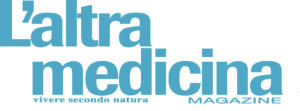Articolo L’Altra Medicina N. 95 05/2020
Note
[i]Del Prete M., et al. Insulin resistance and acne: a new risk factor for men? Endocrine. 2012
[ii]Titus S., Hodge J. Diagnosis and treatment of acne. American Family Physician. 2012
[iii]Cordain L., et al. Acne vulgaris: a disease of western civilization. Archives of Dermatology. 2002
[iv]Chen W., et al. Acne-associated syndromes: models for better understanding of acne pathogenesis. Journal of the European Academy of Dermatology and Venereology. 2011
[v]Zouboulis C. C. Acne as a chronic systemic disease. Clinics in Dermatology. 2014
[vi]Borgia F., et al. Correlation between endocrinological parameters and acne severity in adult women. Acta Dermato-Venereologica. 2004
[vii]Timpatanapong P., Rojanasakul A. Hormonalprofiles and prevalence of polycystic ovary syndrome in women with acne. Journal of Dermatology. 1997
[viii]Azziz R. Diagnostic criteria for polycystic ovary syndrome: a reappraisal. Fertility and Sterility. 2005
[ix]Housman E., Reynolds R. V. Polycystic ovary syndrome: a review for dermatologists: Part I. Diagnosis and manifestations. Journal of the American Academy of Dermatology. 2014
[x]Smith R. N., et al. The effect of a high-protein, low glycemic-load diet versus a conventional, high glycemic-load diet on biochemical parameters associated with acne vulgaris: a randomized, investigator-masked, controlled trial. Journal of the American Academy of Dermatology. 2007
[xi]Melnik B. C. Diet in acne: further evidence for the role of nutrient signalling in acne pathogenesis. Acta Dermato-Venereologica. 2012
[xii]Adebamowo C. A., et al. Milk consumption and acne in adolescent girls. Dermatology Online Journal. 2006
[xiii]Adebamowo C. A., et al. Milk consumption and acne in teenaged boys. Journal of the American Academy of Dermatology. 2008
[xiv]Melnik B. The pathogenic role of persistent milk signaling in mTORC1- and milk- microRNA-driven type 2 diabetes mellitus. Current Diabetes Reviews. 2015
[xv]Del Prete M., et al. Insulin resistance and acne: a new risk factor for men? Endocrine. 2012
[xvi]Demir B., et al. Changes in serum desnutrin levels in patients with acne vulgaris. European Journal of Dermatology. 2014
[xvii]Melnik B. C., et al. Acne: risk indicator for increased body mass index and insulin resistance. Acta Dermato-Venereologica. 2013
[xviii]Lindeberg S., et al. Low serum insulin in traditional Pacific Islanders—the Kitava study. Metabolism. 1999
[xix]Melnik B. C., et al. Over-stimulation of insulin/IGF-1 signaling by western diet may promote diseases of civilization: lessons learnt from laron syndrome. Nutrition & Metabolism. 2011
[xx]Norat T., et al. Diet, serum insulin-like growth factor-I and IGF-binding protein-3 in European women. European Journal of Clinical Nutrition. 2007
[xxi]Crowe F. L., et al. The association between diet and serum concentrations of IGF-I, IGFBP-1, IGFBP-2, and IGFBP-3 in the European prospective investigation into cancer and nutrition. Cancer Epidemiology Biomarkers and Prevention. 2009
[xxii]Adebamowo C. A., et al. High school dietary dairy intake and teenage acne. Journal of the American Academy of Dermatology. 2005
[xxiii]Melnik B. C. Dietary intervention in acne: attenuation of increased mTORC1 signaling promoted by Western diet. Dermato-Endocrinology. 2012
[xxiv]Melnik B. C. The role of transcription factor FoxO1 in the pathogenesis of acne vulgaris and the mode of isotretinoin action. Giornale Italiano di Dermatologia e Venereologia. 2010
[xxv]Smith R. N., et al. A low-glycemic-load diet improves symptoms in acne vulgaris patients: a randomized controlled trial. The American Journal of Clinical Nutrition. 2007
[xxvi]Kwon H. H., et al. Clinical and histological effect of a low glycaemic load diet in treatment of acne vulgaris in Korean patients: a randomized, controlled trial. Acta Dermato-Venereologica. 2012
[xxvii]Ketron LW, King JH. Gastrointestinal findings in acne vulgaris. JAMA. 1916
[xxviii]Zhang H, et al. Risk factors for sebaceous gland diseases and their relationship to gastrointestinal dysfunction in Han adolescents. J Dermatol. 2008
[xxix]Lombardo L, et al. Increased incidence of small intestinal bacterial overgrowth during proton pump inhibitor therapy. Clin Gastroenterol Hepatol. 2010
[xxx]Parodi A, et al. Small intestinal bacterial overgrowth in rosacea: clinical effectiveness of its eradication. Clin Gastroenterol Hepatol. 2008
[xxxi]Strickler A, et al. Complement fixation in acne vulgaris. J Cutaneous Dis. 1916
[xxxii]Juhlin L, Michaëlsson G. Fibrin microclot formation in patients with acne. Acta Derm Venereol. 1983
[xxxiii]Khalif IL, et al. Alterations in the colonic flora and intestinal permeability and evidence of immune activation in chronic constipation. Dig Liver Dis. 2005
[xxxiv]Attaluri A, et al. Methanogenic flora is associated with altered colonic transit but not stool characteristics in constipation without IBS. Am J Gastroenterol. 2010
[xxxv]Volkova LA, et al. Impact of the impaired intestinal microflora on the course of acne vulgaris. Klin Med (Mosk) 2001
[xxxvi]Zhang H, et al. Quantitative studies on normal flora of seborrhoeic dermatitis. Chin J Dermatol. 1999
[xxxvii]Leeming J. P., et al. The microbial colonization of inflamed acne vulgaris lesions. British Journal of Dermatology. 1988
[xxxviii]Claudel J.P., et al. Acne and nutrition: hypotheses, myths and facts. J Eur Acad Dermatol Venereol. 2018
[xxxix]Burris J., et al. Acne: the role of medical nutrition therapy. J Acad Nutr Diet. 2013
[xl]Tayel D., et al. Dietary Intervention to Alleviate Acne Severity. American Journal of Research Communication. 2013
[xli]Bodo M. Dietary intervention in acne. Dermato-Endocrinology. 2012
[xlii]Pappas A., et al. Metabolic fate and selective utilization of major fatty acids in human sebaceous gland. J Invest Dermatol. 2002
[xliii]Ereaux LP. Facts, fads and fancies in the treatment of acne vulgaris. Can Med Assoc J. 1938
[xliv]Siver RH. Lactobacillus for the control of acne. J Med Soc New Jersey. 1961
[xlv]Marchetti F, et al. Efficacy of regulators of the intestinal bacterial flora in the therapy of acne vulgaris. Clin Ter. 1987 (italian)
[xlvi]Volkova LA, et al. Impact of the impaired intestinal microflora on the course of acne vulgaris. Klin Med (Mosk) 2001
[xlvii]Kim J, et al. Dietary effect of lactoferrin-enriched fermented milk on skin surface lipid and clinical improvement of acne vulgaris. Nutrition. 2010
[xlviii]Mikelsaar M, Zilmer M. Lactobacillus fermentum ME-3 – an antimicrobial and antioxidative probiotic. Microb Ecol Health Dis. 2009
[xlix]Bowe WP, Logan AC. Clinical implications of lipid peroxidation in acne: old wine in new bottles. Lipids Health Dis. 2010
[l]Hacini-Rachinel F, et al. Oral probiotic control skin inflammation by acting on both effector and regulatory T cells. PLoS One. 2009
[li]Cazzola M, et al. Immunomodulatory impact of a synbiotic in T(h)1 and T(h)2 models of infection. Ther Adv Respir Dis. 2010
[lii]Barrett JS, et al. Probiotic effects on intestinal fermentation patterns in patients with irritable bowel syndrome. World J Gastroenterol. 2008

